THE THEATRE ORGAN
PART ONE – INTRODUCTION
-oOo-
THE PIPE ORGAN
-oOo-
The Pipe Organ is a musical instrument that contains one or more sets of pipes, a wind system and one or more keyboards (manual). It is commonly used in churches, cathedral and recital halls.
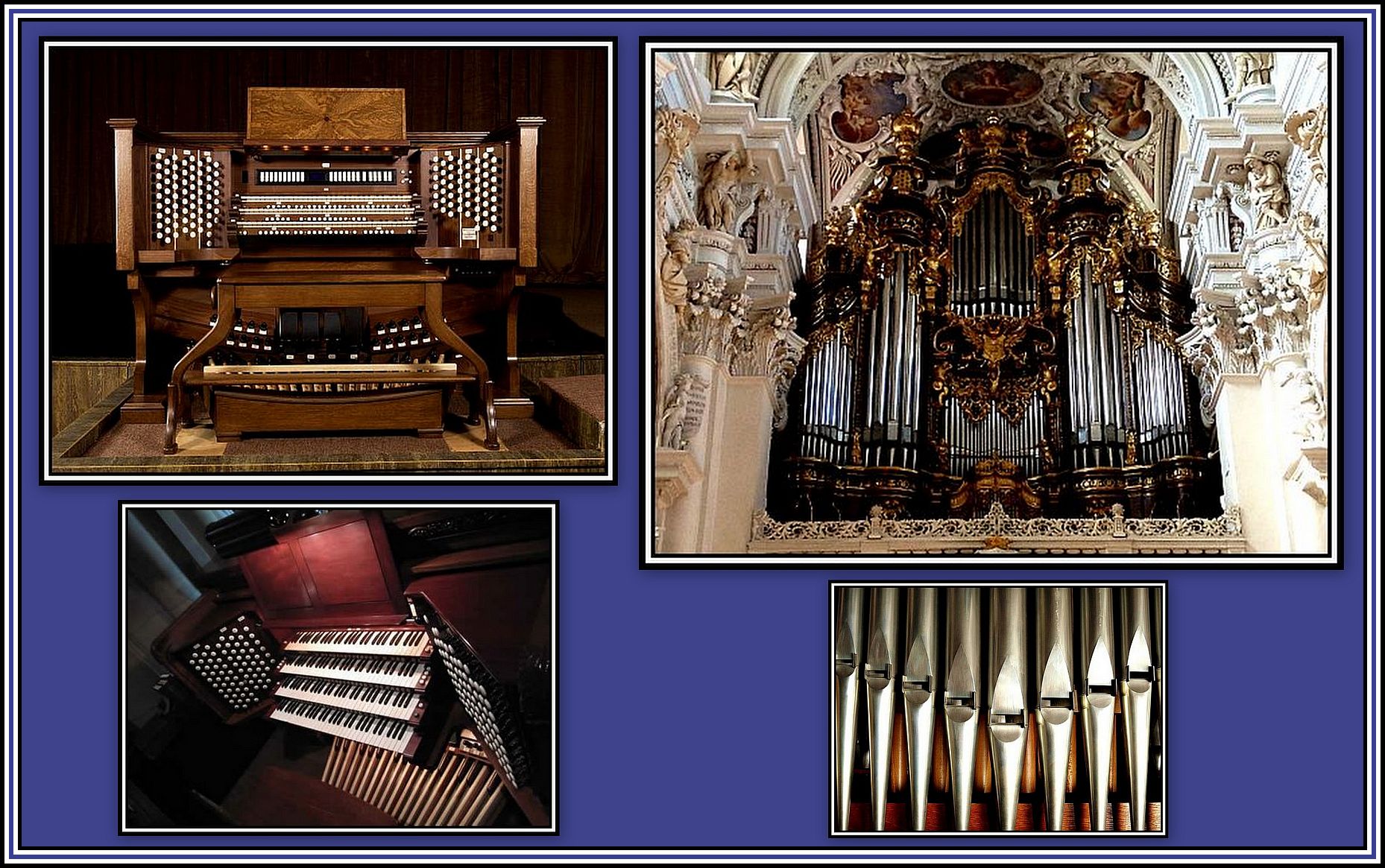 The Pipe Organ
The Pipe Organ
Top Left: The Console of the Organ at the Bob Jones University
Top Right: The Pipes of St. Stephen’s Cathedral, Passau, Germany
This is the largest Organ in Europe and has 1,774 Pipes
Bottom Left: The Console of the Organ at The Cathedral of St. John The Divine, New York
Bottom Right: Metal Organ Pipes
The history of the Pipe Organ dates back to the 3rd Century and to Ancient Greece where the necessary wind supply of the Hyraulis was produced by water pressure. Later, a bellows system was used for this purpose and by the 12th Century, its complexity had increased thereby producing an instrument able to produce sounds of different quality, and by the 17th Century, those of the modern organ had been developed and became the most complex man-made device until the development of the telephone exchange.
An organ pipe is the sound producing element that resonates at a specific pitch, when pressurized air (called wind) is driven through it. Each pipe is tuned to a specific note of the musical scale and a set of organ pipes of similar timbre tuned to a scale is known as a rank or a stop. Organ Pipes may be made of metal or wood, and rarely, of glass, porcelain, papier-mâché, stone or plastic.
 The Organ of Walt Disney Concert Hall
The Organ of Walt Disney Concert Hall
The Organ has 134 Pipes ranging in size from 32 feet to a few inches in length.
The Pipes are made of high tin alloys and are commonly referred to as
French Fries (since they look like a bag of McDonald’s chips!) or Pick up Sticks
Timbre, tone colour or tone quality is the quality of a musical note or sound or tone that distinguishes different types of sound production, for example, voices and the range of musical instruments. Timbre is the quality that allows a musical sound different from another even when it played on different instruments with same pitch and loudness.
Most organs have multiple ranks of pipes and differ in timbre, pitch and loudness, which can be employed either alone or in combination through controls called stops. With the Pipe Organ, stops, draw knobs or draw stops, are a series of knobs at the side of the keyboard, which are pulled out to allow a particular rank to be played.
The number of ranks of pipes may vary according to the size of the organ, ranging from one or two dozen to over twenty-thousand.
A continuous supply of wind ensures that a note or series of notes played on the Pipe Organ is sustained as long as the key(s) is depressed. This is unlike the situation found with the piano or harpsichord where sound immediately begins to decay whether the key is continued to be depressed or not.
The Pipe Organ may have one or more keyboards or manuals, which are played with the hands. A musical keyboard or manual is also found associated with the piano, harpsichord, synthesizer etc. Organs have more than one manual and some larger instruments may have four or more and are encased into an organ console or key desk. In contrast, the pedal board of a Pipe Organ is a keyboard that is played with the feet and has its own stops unique from those of the manuals.
 The Console of the Calvary Church, Charlotte N.C., with five keyboards
The Console of the Calvary Church, Charlotte N.C., with five keyboards
Click here to hear the organ (Trumpet Voluntary)
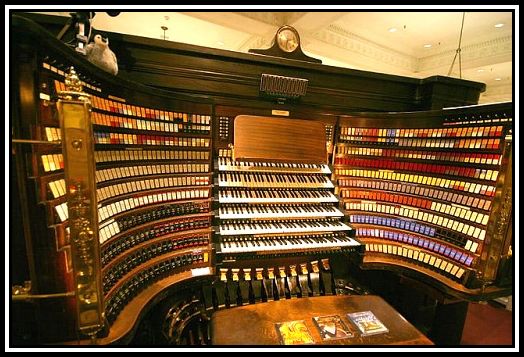 The Wanamaker Organ – The Largest Operational Pipe Organ in the World
The Wanamaker Organ – The Largest Operational Pipe Organ in the World
The organ Console has six ivory keyboards with 729 colour-coded stop tabs
together with 168 piston buttons under the keyboards
and 42 foot controls and over 28,000 pipes
(28,543 in total if my count was correct!).
The organ is played each day and more often at certain times of the year.
Click here to hear Virgil Fox (1912-1980) play and discuss The Wanamaker Organ
Click here to hear an excerpt from Wanamaker’s Organ Day, 2012
Click here to hear the full 1964 album, Virgil Fox plays The John Wanamaker Organ
—ooOoo—
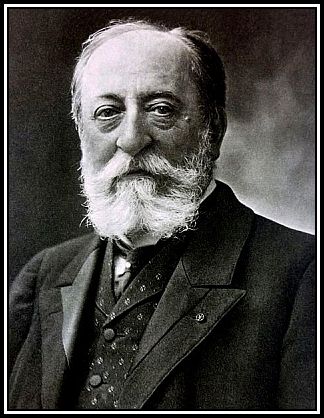 Click here to hear the 4th Movement of Symphony No. 3 (The Organ) by Saint-Saëns
Click here to hear the 4th Movement of Symphony No. 3 (The Organ) by Saint-Saëns
—ooOoo—
In 2006, I was fortunate enough to visit Los Angeles and on a Sunday evening, I was treated to a visit to the Walt Disney Concert Hall where I had the opportunity to attend an organ recital. Sadly, I knew little about organs, but even to my untrained ear, I knew that the sound produced by the organ was stunning. It proved to be an unforgettable experience.
—ooOoo—
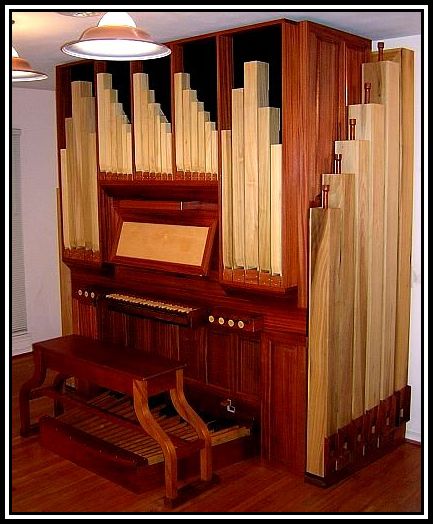 An All-Wood Pipe Organ built by Raphi Giangiulio and maintained in his home
An All-Wood Pipe Organ built by Raphi Giangiulio and maintained in his home
-oOo-
——-oooOOOooo——-
Click here to go to PART TWO: BUILDERS OF THE THEATRE ORGANS
PART TWO consists of Five Pages
——oooOOOooo——
Click here to return to THE GLOSSARY
——oooOOOooo——
Click here to return to THE THEATRE ORGAN Home Page
——oooOOOooo——
——oooOOOooo——

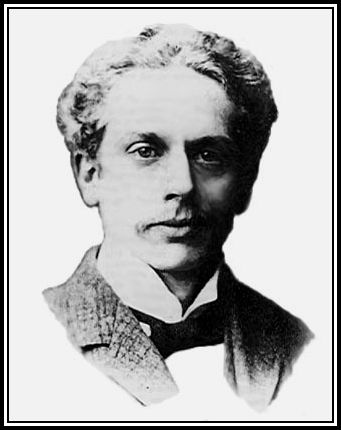
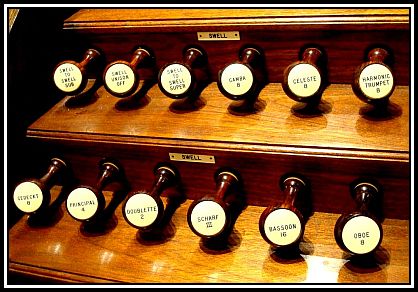
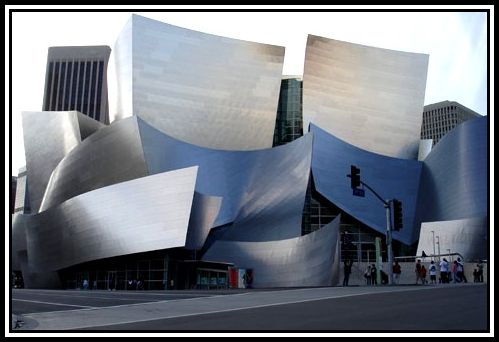
I would like to congratulate you on the enormous amount of research you have undertaken on theatre organs, and just how readable the material is.
This is not a subject I expected to interest me greatly, but I was wrong. It is full of fascinating information, and I can thoroughly recommend it.
The material is presented an in eye-catching style – full of wonderful photos, illustrations, and a huge variety of facts.
Congratulations on another useful contribution and an excellent production.
I look forward to reading your work on department stores next.
Well now…Leave it to Charles to choose a fascinating and complex instrument, and the organ is probably the most complex and versatile
of them all, and embark on reconstructing it’s entire history, it’s amazing evolution, its unmatched entertaining value through the ages…I am
now convinced old man Wurlitzer would have loved to
have you run the publicity and advertising campaigns for this beloved and marvelous device !…
Keep this up and you might soon hear from the…Yamaha management !… 🙂